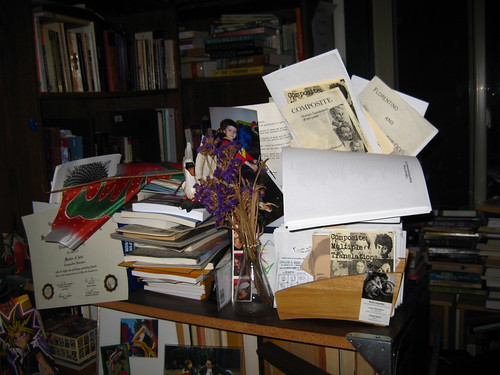HTML Markup for Amazon Kindle and ebooks
I have two awesome interns for Tollbooth Press right now, with the agreement that we’ll blog about what we work on or learn. Both are friends of the family; former volunteers at the local history museum bookstore; and fierce readers, thinkers, and writers, just starting high school. I gave them both a long list of ideas for projects, research, and work that might be interesting. Ellie was most interested in electronic book publishing, while Julia, who is pretty handy with spreadsheets and data analysis, thought Google Analytics and Webmaster Tools sounded good. I’m hoping to get a little bit of (paid) help from them too, in visits to Stanford’s Green Library, xeroxing and writing up bibliographical information for some of my translation research.
Today Ellie and I looked at how to set up books for sale on Amazon for the Kindle or other electronic formats. I thought that running through a very simple example would open up some possibilities and new ideas. Then we can work on marking up one of Tollbooth Press’s printed books. Also, I expect that Ellie may take the idea and run with it, since she’s a promising fiction writer, has friends who write, and might enjoy editing.
We played the accordion a little bit first off. I had to laugh. At first try, Ellie was already better than I am at playing the accordion, reading my sheet music and picking out the Lord of the Rings theme by ear. Then we each made sample html files, me on a Mac in TextEdit and Ellie on her PC in Notepad, to demonstrate basic HTML markup and how to change a file and reload it in a browser.
We started out with just a few lines in this file, then expanded it to have multiple pagebreaks and paragraphs, saving it as plain text with the .html file extension and reloading it in a browser.
Then we both made accounts on Amazon Desktop Publishing. It has a very clear path to follow in order to create a new book. We basically filled out a form with the book title, language, and some other information, then uploaded our files. After the files are uploaded, but before they’re saved, a new button shows up on DTP to preview your book on a simulated Kindle in the browser. Trying this button gives a very good idea of how your book will end up. We tweaked our html files and uploaded them a couple of times. We then used a longer text of Ellie’s, saving it as HTML from Microsoft Word, and re-opening the resulting file in Notepad to see what the markup looked like. It was cleaner than I expected, separating out the styles into pretty decent CSS and not putting terribly too much cruft into the body markup. But I think it was important to start from plain text and mark up a simple file from scratch.
As we finished the setup process we ran into a problem – Amazon requires an address and taxpayer ID, because they also require you to set a price and take royalties as you upload your book. With permission from Ellie’s dad we did this setup. Within a couple of days, her sample writing should be available and I’ll certainly buy, download, and test it.
I showed off Thoughtcrime, Sumana Harihareswara and Leonard Richardson’s recent anthology, and its appendix “How To Do This and Why”, which explains how to make an anthology.
I had to pull her out of Facebook chat a few times, but that’s okay since I was on the #geekfeminism IRC channel in another window myself. Plus, I was very amused to see her and her friends using Google Translate to chat with each other in various languages. This cleverly evades the casual Facebook observer’s understanding while not being uncrackable or really difficult to engage it. It raises the bar of attention and results in some cool side effects, like learning a bit of Swahili with your friends.
Ellie then showed me the first bit of A Very Potter Musical, which looks brilliant and funny, and I showed her the somewhat more lowbrow Usher vs. Goat YouTube doubler mashup.
She wrote up a short post to describe what we worked on, which I think is a good exercise. It will show that my interns learned interesting skills and do good work, and the internship isn’t just resume-padding. It seems only fair that I write something up too.
It was a fun afternoon. I look forward to going further into HTML, CSS, book layout, editing, and the nitty gritty details of small press publishing. I like the idea of transmitting some of my zine/small press art book skills and background, but also the idea of giving smart ambitious people the keys to immediate wide distribution, publishing they can do for free, without scraping up money for xeroxing, printing, or binding — and without being doomed to carry boxes of unsold zines and books around with them for their entire lives. As I’m doomed, until I someday digitize all those back issues of Composite and Ratatosk and the Punk Paper Dolls.
I had some more wise advice to give about the importance of managing your accounts across various services, your account names, remembering your passwords, and so on. That particular pompous lecture will have to wait till next time. That’ll surely come back to haunt me since both my interns are organizational geniuses compared to my slovenly sprawl.
Links for reference: Dave Raggatt’s Introduction to HTML; Amazon DTP guide to HTML markup; Introduction to CSS; Accordion Apocalypse.
